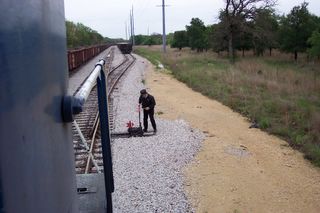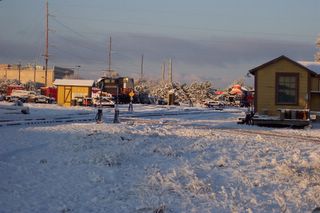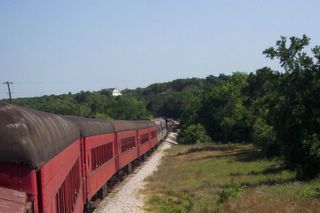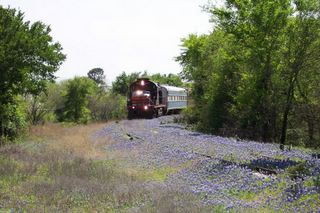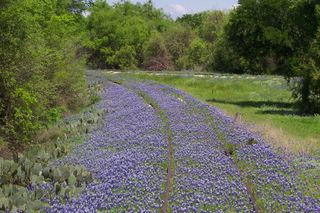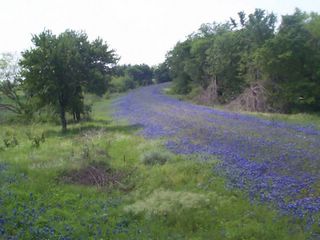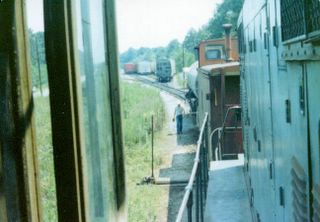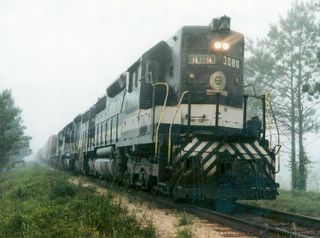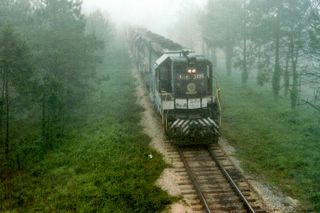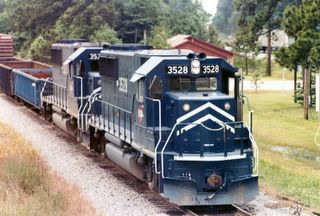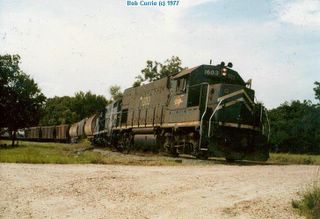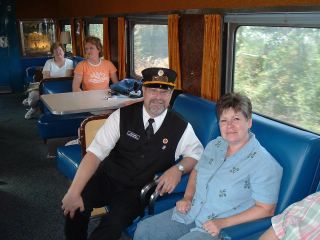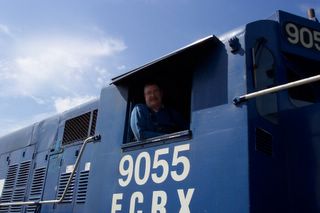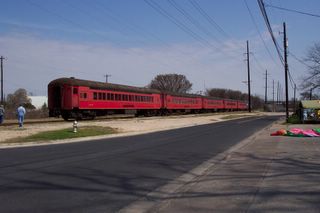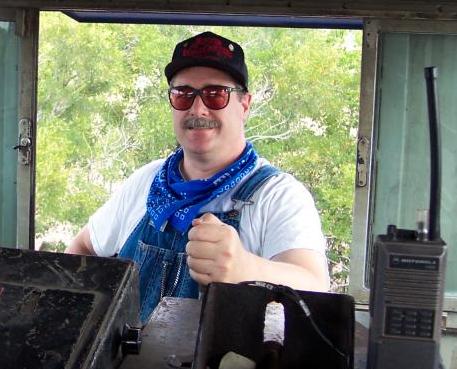
This is the end of track at the spur leading into downtown Burnet, TX. The end of the rail is right below the snow plow on my engine. Our passenger depot and platform is on the other side of the train. I like to blow a crossing signal (two longs, a short, and a long) coming up to the end of track to see if I can get vehicular traffic to stop on the road just past the end of track. Even though there is no track in the roadway, people stop. I guess they figure I am going to keep going into the grocery store parking lot ;-)



